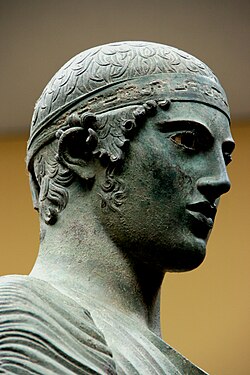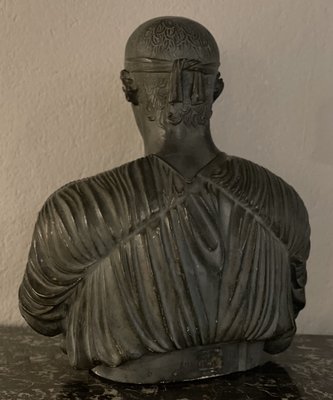The Charioteer of Delphi (Heniokhos)

The Charioteer of Delphi, also known as Heniokhos (Greek for “the rein-holder”), is one of the most celebrated masterpieces of ancient Greek bronze sculpture.

Dating to around 470 BCE, it was discovered in Delphi, Greece, and originally formed part of a larger monument dedicated to Apollo after a victory in the Pythian Games. The statue depicts a young charioteer standing proudly and composed, holding the reins of his horses with calm dignity.

His serene expression, detailed facial features, and the delicate rendering of his draped chiton reflect the transition from the Archaic to the Early Classical style, known as the Severe Style.

Remarkably preserved, the Charioteer of Delphi captures the ideal of self-control (sophrosyne) and harmony that defined Greek artistic ideals, making it one of the finest surviving examples of classical bronze sculpture.











